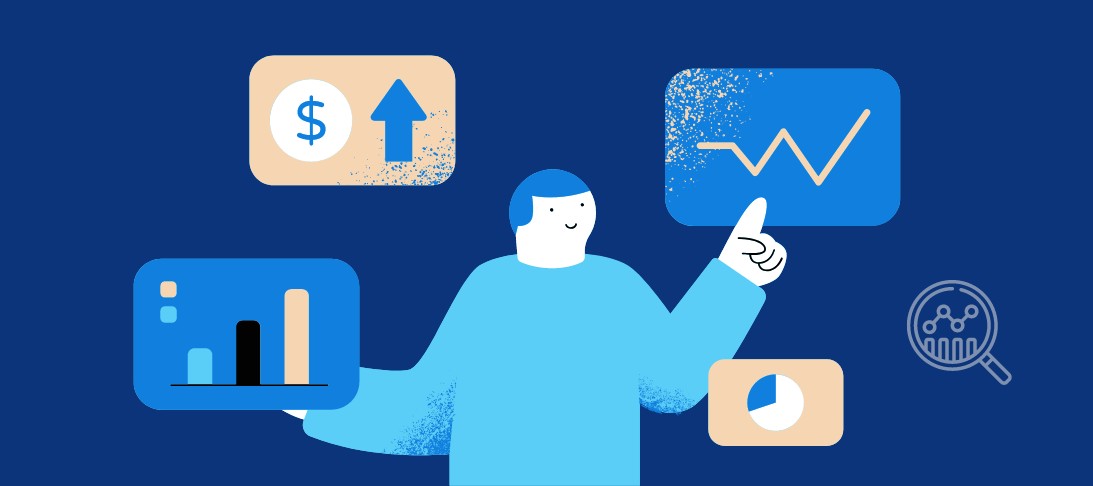The author is a Director - Delivery in Eucloid. For any queries, reach out to us at: contact@eucloid.com
The AI-First Revolution: 8 Trends Shaping the Future of Analytics

The birth of an AI-first era, driven by the abundant resource of data, has sparked a monumental transformation in the realm of analytics. As organizations race to harness the power of data for a competitive edge, developers emerge as the architects of tomorrow, shaping the real-time applications of the future. GenAI and other disruptive technologies are paving the way for a reimagined landscape, transcending traditional data-first strategies and pushing the boundaries of what can be achieved with data.
Businesses, now more than ever, must stay current with the latest advancements in data analytics to keep a competitive edge. So here are the top trends that will continue to reshape the analytics landscape in 2024.
1. API-First Approach
There is a growing demand for solutions that simplify complexity in the digital landscape. This is where the API economy comes in, with companies looking for solutions that can integrate seamlessly with their existing systems. As a result, there is a trend towards API-First design, where applications prioritize API and event-based access to deliver customized and modular functionality. This highlights the importance of flexibility and composability in cloud applications and is predicted to be the preferred approach for new SaaS designs in the coming years.
2. Augmented Analytics
 (1).png)
The ability to turn large amounts of information into actionable insights has always been a key factor in driving business success. Now, with the rise of augmented analytics, we can take this capability to a whole new level. By using artificial intelligence, augmented analytics helps businesses make smarter decisions by providing personalized insights. For example, an online retailer can use this technology to offer customers tailored product recommendations based on their past purchases and behavior.
3. Real-time Analytics
Live data has become a crucial aspect of decision-making for businesses. This is where real-time analytics comes in, providing organizations with immediate insights to make agile choices, respond to changing conditions, and optimize operational efficiency. In manufacturing businesses, for example, real-time analytics allows for the live monitoring of production processes. Any disruptions can be quickly identified and addressed, minimizing downtime and maximizing efficiency.
4. Explainable AI
Explainable AI is increasingly gaining popularity as it brings clarity to complex data models. By using this technology, businesses can better understand how AI is making decisions, promoting transparency and building trust. In fields like finance, explainable AI is essential in ensuring regulatory compliance. For instance, banks can now provide clear explanations for loan approvals or denials by utilizing credit scoring models.
5. Conversational AI
The integration of natural language processing into AI has paved the way for conversational AI, making it easier for end-users to interact with data. This technology allows for data-driven insights to be obtained through everyday conversations, without the need for specialized data knowledge or complex query languages. With conversational AI, the power of AI is accessible to everyone, regardless of technical background, revolutionizing decision-making processes and maximizing the potential of data-driven insights.
6. Predictive Analytics
 (1).png)
The future of business analytics is focused on predicting and shaping outcomes. This includes using predictive and prescriptive analytics, which are becoming increasingly important as big data becomes the focus of analytics processes. Predictive analytics uses existing data to forecast future probabilities, helping businesses make better decisions and identify opportunities and risks. It is already being applied in industries such as airlines, hotels, and banking. In the coming years, there will be a push towards making predictive analytics accessible for all through self-service capabilities. This will also lead to the evolution of Predictive Analytics 2.0, which goes beyond forecasting to provide prescriptive insights and personalized treatments, as seen in the healthcare industry.
7. Automated Data Management
Today, businesses are inundated with vast amounts of data, making it challenging to extract meaningful insights and make informed decisions. Automated data management helps businesses seamlessly integrate, process, and analyze data from various sources, creating a streamlined analytics pipeline. With this capability, marketing teams can easily track campaign performance, customer engagement, and ROI, leading to data-driven marketing strategies that deliver real results.
8. Responsible AI
The delicate balance of innovation and ethics lays the foundation for building sustainable analytics solutions that ultimately foster trust with users, stakeholders, and customers. In a rapidly evolving landscape of AI capabilities, prioritizing responsible AI is key in shaping a future where technology not only delivers powerful insights, but does so in a way that aligns with societal values and principles.
The power of data has never been more prevalent, and with the continuous advancements in technologies such as GenAI, businesses have the opportunity to harness this resource to drive innovation, efficiency, and growth. It is an exciting time to be in the world of analytics, and with these trends, the possibilities are endless.
Posted on : February 10, 2024
Category : Marketing
About the Authors
